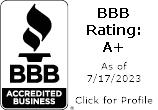Hurricanes are deadly and costly, but that doesn’t mean you should have to avoid living in a hurricane-prone area. Although with the combination of real estate growing in coastal regions and rising real estate prices, hurricanes aren’t going to get any cheaper or any less destructive any time soon. Of course, there are some basics for hurricane-prone homeowners that can help make the storms a little less expensive and destructive.
Homeowners Insurance
Katrina left many homeowners battling with insurance companies over whether damage was caused by wind or water. Many claims, years later, still haven’t been settled. Don’t put yourself in this position. Make it a point to find out what your policy covers long before it ever becomes an issue.
Most homeowners policies have coverage for damage caused by hurricanes. Of course, this usually only covers the damage done by high winds associated with the storm, as well as fires and tornadoes, but not the accompanying flooding.
Homeowners will generally need to purchase additional flood insurance to cover water damage caused by rain or storm surges, or they may literally be left out in the rain when trying to collect after a storm hits. If you simply can’t afford private coverage, you can apply for flood insurance through the National Flood Insurance. Be advised, however, that policies through this program are limited to $250,000. If your home is worth more, you’ll need to seek out additional coverage. You should also make sure what kind of water damage is covered specifically by your flood insurance. Often coverage for long term damage caused by water, like mold, will be in addition to standard coverage.
Getting comprehensive hurricane coverage isn’t cheap in high risk areas. Some companies won’t even cover coastal areas because the cost is just too great, while others require specialty coverage, and still others have high deductibles, sometimes up to 10% of the value of your home. Most high risk areas will have some sort of government insurance available if commercial policies aren’t available.
Finally, give yourself plenty of lead time ahead of storm season to get your policies in order. Often insurance companies won’t sell coverage during high risk seasons to avoid buyers who are only buying coverage for those months and will later drop it. At the very least, make sure you get enough coverage for the value of your property. If you’re still holding onto a policy bought at real estate prices 5 or 10 years ago, you need to seriously consider talking with your agent about making an adjustment.
Minimizing Your Risk
Hurricanes are a destructive force to be reckoned with, but you can do more than get good insurance coverage to help reduce the financial impact of a hurricane on your home. Here are some of the most important.
Shutter your windows. Windows are some of the most delicate parts of your home, and as such are especially susceptible to the high winds and flying debris that come along with hurricanes. Invest in commercial grade shutters or stock up on plywood to board up your windows with when a storm approaches.
Secure your garage door. Garage doors are big and wide, just like a sail, and can catch the wind in much of the same manner. Once blown in, you garage can provide an access point for winds that can do quite a bit of damage to the rest of your house. Purchase a hurricane reinforced door or brace your existing door with 2x4s when you’ve been alerted of a hurricane.
Strap down and reinforce your roof. Hurricane force winds act on your home’s roof much like lift acts on an airplane wing, often causing roofs to be ripped right off. Keep yours attached by installing hurricane strapes and reinforcing the end gables on your home.
Ensure good drainage. Keep your basement from flooding and potentially ruining valuables by paying close attention to your home’s drainage. Clean out and maintain your gutters, extend downspouts, and make sure there are no low spots near your foundation.
Choose hurricane friendly landscaping. There are some trees and bushes that are more hurricane resistant than others, so make this a serious consideration when planning out your landscaping You’ll also want to avoid using small gravel and rocks, as these can become quite dangerous if lifted up and tossed at your home by winds.
Secure everything. Anything that can be strapped down outside, should be. This includes outbuildings, lawn furniture, and even air conditioners. Even things you think are too heavy to be lifted can take off if the winds are strong enough.
Make a plan. Don’t get caught off guard if a hurricane strikes your area. Plan ahead for preparing your home, how you’ll evacuate, what you’ll do with pets, and for any supplies you’ll need to brave the storm.
Take care of personal items. If you’ve got anything particularly valuable, you’ll want to keep it in a place where you can find it quickly in case of evacuation. Store other personal items in water-tight containers and lift as much as you can off of the floor and in to inner rooms.
Hurricane Basics
If you’re living in a high risk area, you’ll want to know the basics about hurricanes before you are faced with a storm. In the Atlantic, the hurricane season lasts from June 1st until November 30th. This doesn’t mean that hurricanes never occur outside of these dates, but 97% of all hurricanes fall within these months of the year. Maximum hurricane activity usually occurs from late August to mid September.
During this season, the southern and eastern US coasts are threatened by 10 tropical storms on average. Of these 10 storms, only 6 will likely reach hurricane strength. This sounds like a lot, but statistics have shown that only one in seven hurricanes usually makes landfall. Of course, there are exceptions to this, like 2005, when no less than 15 hurricanes formed, 7 being major hurricanes and 4 reaching category 5 status.
What these storms will cost you in damage depends largely on the value of your home and your proximity to the storm surge. Hurricanes Katrina and Rita caused over $50 billion worth of damage, together some of the most costly disasters in US history. Property along coastal regions is often worth more than that inland, causing weather related property loss to increase 40% between 1990 and 2000.
The highest risk areas for hurricanes lie along the southern US coast. Florida is usually hit the hardest, with Alabama, Georgia, Louisiana, Mississippi, North Carolina, South Carolina and Texas also lying in hurricane territory. Within those regions, your home could be in greater danger if you live within 20 miles of the coast or in a low lying area. Get your risk assessed before a hurricane happens so you’ll be prepared if the worst strikes.
Living near the coast has its benefits: warm weather, soothing waves, and walks along the beach. The risk of hurricanes doesn’t have to tarnish your dreams of coastal living however, if you’re smart and plan ahead. Follow these tips and you’ll have much less to worry about come next hurricane season.


